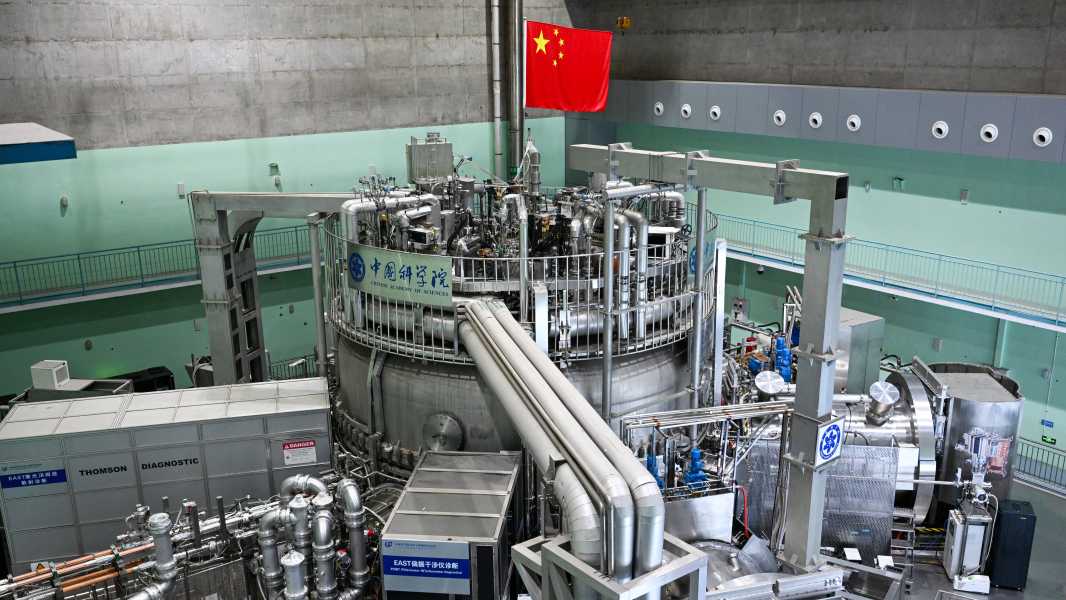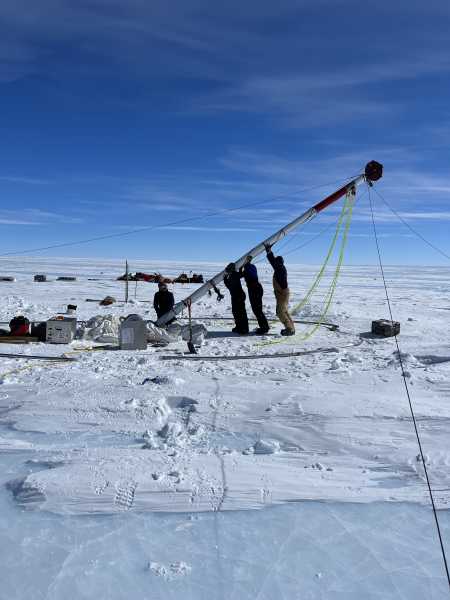
The Experimental Advanced Superconducting Tokamak (EAST) nuclear fusion reactor is seen on January 15, 2025 in China. (Image credit: Zhang Dagang/VCG via Getty Images)
China's 'artificial sun' reactor has set a new world record for maintaining super-hot plasma for long periods of time, marking a major milestone on the road to virtually unlimited clean energy.
The Experimental Advanced Superconducting Tokamak (EAST) – a nuclear fusion reactor – maintained a stable, tightly confined circuit of plasma – the high-energy fourth state of matter – for 1,066 seconds on Monday (January 20), more than double the previous record of 403 seconds, according to Chinese state media.
Nuclear fusion reactors are called “artificial suns” because they produce energy in a similar way to the sun — by fusing two light atoms into one heavier atom using heat and pressure. The pressure inside the sun is much higher than in reactors on Earth, so scientists compensate by using temperatures that are much higher than the sun.
Nuclear fusion has the potential to provide a nearly unlimited source of energy without emitting greenhouse gases or creating significant nuclear waste. However, scientists have been working on the technology for more than 70 years, and it is probably not advancing fast enough to be a practical solution to the climate crisis. Researchers hope to have fusion power within decades, but it may take much longer.
EAST's new record won't be immediate evidence of what's called the “Holy Grail” of clean energy, but it is a step toward a possible future in which fusion power plants could generate electricity.
EAST is a magnetic confinement reactor, or tokamak, designed to sustain continuous plasma burning for long periods. Such reactors have never achieved the state known as ignition, in which nuclear fusion produces its own energy and sustains its reaction, but the new record is a step toward sustaining the long-term closed plasma loops that future reactors will need to generate electricity.
“The fusion device must operate stably and efficiently for thousands of seconds to ensure self-sustaining plasma circulation, which is critical for long-term power generation in future fusion plants,” Song Yuntao, director of the Institute of Plasma Physics at the Chinese Academy of Sciences, who is in charge of the fusion project, told Chinese state media.
EAST is one of several nuclear fusion reactors in the world, but all currently consume significantly more energy than they produce. In 2022, the US National Ignition Facility fusion reactor briefly achieved ignition in its core using a different experimental method than EAST, relying on quick bursts of energy, but overall the reactor still consumed more energy than it produced.
Tokamaks like EAST are the most common nuclear fusion reactors. EAST heats plasma and confines it inside a doughnut-shaped reactor chamber — called a tokamak — using powerful magnetic fields. According to recent reports, researchers have made several improvements to the reactor, including doubling the power of its heating system, Chinese state media reported.
The data collected by EAST will help develop other reactors both in China and abroad. China is participating in the International Thermonuclear Experimental Reactor (ITER) program, which involves dozens of countries, including the United States, Britain, Japan, South Korea and Russia.
The ITER reactor, which is being built in southern France, has the most powerful magnet in the world and will not begin operating until 2039. ITER will be an experimental instrument designed to achieve sustainable
Sourse: www.livescience.com





